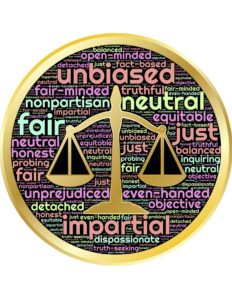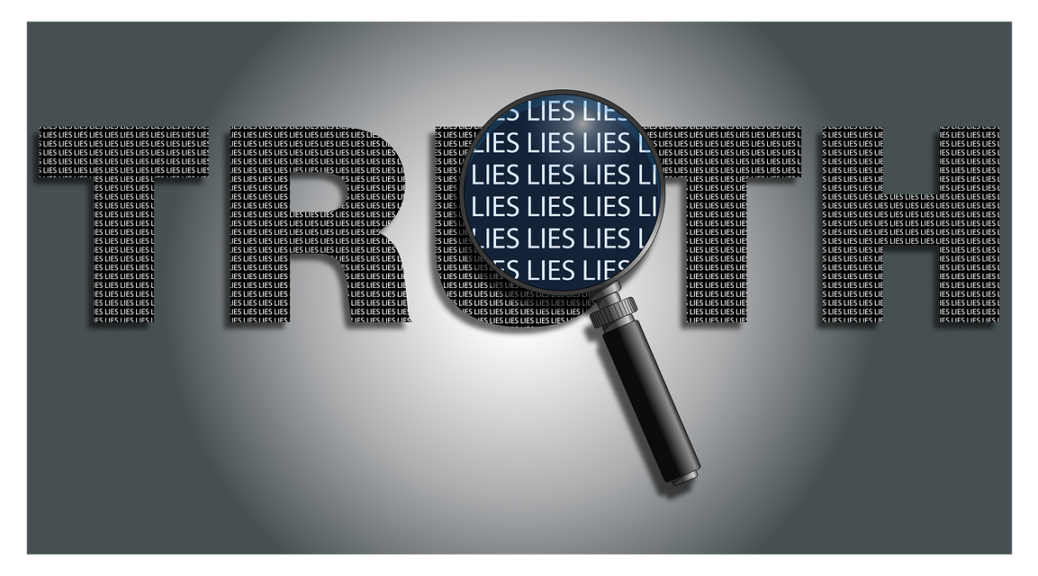Introduction
 Following a few recent allegations of sexual abuse, many are debating the meaning and application of the maxim “innocent until proven guilty.” As we have discussed before, believing victims and upholding the “innocent until proven guilty” standard are not mutually exclusive.
Following a few recent allegations of sexual abuse, many are debating the meaning and application of the maxim “innocent until proven guilty.” As we have discussed before, believing victims and upholding the “innocent until proven guilty” standard are not mutually exclusive.
First, “innocent until proven guilty” is not a simply legal formality that only exists in the (United States) courtroom. In the United States, the foundations of this maxim are based on the constitutional and fundamental right of due process in the Fifth and Fourteenth Amendments to the U.S. Constitution. The Fifth Amendment states, in relevant part:
No person shall be held to answer for a capital, or otherwise infamous crime, unless on a presentment or indictment of a grand jury, […] nor shall any person be subject for the same offense to be twice put in jeopardy of life or limb; nor shall be compelled in any criminal case to be a witness against himself, nor be deprived of life, liberty, or property, without due process of law… [emphasis added]
The maxim is also part of the United Nations Declarations of Human Rights, Article 11, which states “Everyone charged with a penal offence has the right to be presumed innocent until proved guilty according to law in a public trial at which he has had all the guarantees necessary for his defence.” Finally, the maxim also has roots in the general principle that the “burden of proof is on a claimant.”
However, we, the public, cannot act as judge, jury, and executioner regarding cases of spiritual or sexual abuse. We cannot say “there is no question as to the facts, now we just have to wait for the legal system to find same.” This legal presumption upholds an accused’s right to defend himself or herself. And despite what we believe about the facts of a particular case as presented to the public, perceptions are often misleading. Consider instances in which guns and knives are planted on dead people at the scene of a crime to give the appearance that the killers in those instances killed their victims in acts of self-defense. It is tempting to say that everything is clear, as the weapons were found on the victims’ bodies. But if a defense is never heard and only a claimant’s claims receive the spotlight, there is no opportunity for a defense to, for example, demonstrate that guns or knives were planted. We do not know what we do not know. We cannot learn what we are ignorant of (here, the defense’s version of the story) until we allow ourselves to listen to it. The presumption of innocence has a practical purpose in ensuring that everyone has their day in court.
Innocent Until Proven Guilty Explained
“Innocent until proven guilty” is not a question of fact. On both ends of the spectrum—those who insist the accused is innocent and those who have decided he or she is guilty—are misusing the maxim. Both groups are treating this concept as applying to whether an accused is guilty or innocent. One side insists an accused is innocent until proven guilty in the factual sense while the other side is fixated on the likelihood of guilt despite the legal process not having run its course.
We often speak of “burden of proof” when it comes to legal claims, but this only scratches the surface of what courts look for when determining the veracity of claims.
To better understand the evidentiary process in the legal system, one should be familiar with both “burden of proof” and “burden of production.” Burden of production is the process of actually providing factual evidence in order to meet the burden of proof. The burden of proof always remains on the accuser but the burden of persuasion can shift from the accuser and accused depending on the nature of claims and defenses. By way of example,[1] which is overly simplified for the sake of this article, an accuser claims that the accused “beat up” the accuser, resulting in the legal claim of criminal battery. The defendant must introduce evidence as to the following elements for criminal battery: 1) touching which is harmful or offensive, 2) contact with the victim, and 3) intent to cause harm.
In this case, the only parties that were present were accuser and the accused. The accused is “innocent until proven guilty” and the accuser must prove his case “beyond a reasonable doubt”—the criminal standard of proof.[2]
In using the legal presumption of “innocent until proven guilty” (which, again, is a practical and real concept), courts—and society—should use it as a baseline. Because only the accused and accuser were present, the accuser can only prove his case through circumstantial evidence rather than using direct evidence.
In order to prove the first element of “touching which is harmful or offensive,” the accused enters into evidence camera footage of both parties entering a hotel room, both parties leaving the hotel room, and the accuser appearing to be in pain upon exiting the hotel room. The accuser also introduces evidence of text messages from the accused arranging for a meeting at the same time as the time-stamped footage. To demonstrate the second element of contact to the victim, the accuser relies also on the camera footage in addition to medical records dated the day after the battery demonstrating the afflicted wounds. Finally, the accuser introduces evidence of intent to cause harm in the form of text messages from the accuser apologizing, and the accuser calls an expert witness to demonstrate that the types of wounds inflicted had to be deliberate and not accidental. The accuser testifies to his version of the events as to all elements of the claim.
At this point, the accused could be said to have met the burden of proof and burden of production and the burden of production shifts to the accused. In this criminal case, the defendant must demonstrate reasonable doubt as to the claims by attacking the evidence that establishes any of the elements. In this hypothetical scenario, the identity of the perpetrator is not in question. But that is only one way an accused may demonstrate reasonable doubt. However, the accused presents another version of the facts, testifying that the accuser was heavily drunk and had a terrible fall inside the hotel room and introducing an expert witness that testifies that the injuries could have resulted from a fall. This testimony puts reasonable doubt in the second element of “contact with the victim.” The accused also presents multiple witnesses who testify that the accuser was drinking shortly before the incident in question. The accused also testifies that his text apology was related to another unrelated non-physical dispute that the parties were engaged in and this also speaks to the element of contact with the victim.
Note that generally, testimony is a viable form of evidence. Although it may come down to a “he-said, she-said” scenario, there are various ways to attack a witness’s or party’s credibility. In the above case, the accuser may attack the accused’s testimony and admit that he was drinking prior to the incident, but was not drunk enough to suffer a fall and the fact-finder (whether judge or jury) can review the video footage themselves to determine bodily signs of drunkenness.
Past Acts as Evidence
The accuser may also want to introduce evidence of three other accusers who have made the same or similar accusations. Note that, however, that others accusing the accused of the same or similar accusations have not proven their own claims using the above methodology. Generally, when multiple accusers accuse someone of the same or similar allegations, observers tend to believe the accusers. However, in the legal—and logical—sense, this evidence is weak. It does not prove that the accused is guilty in the particular instance in question. In other words, it may be true that an accused committed criminal battery against another victim but is free from guilt in the case at hand. Moreover, an accused may have valid defenses in the other cases and unless each accusation undergoes a separate analysis and due process, the accusations do not have sufficient merit to establish guilt. In the United States legal system at least, past crimes and other wrong acts can be used for other reasons such as demonstrating motive or modus operandi, but it is both impermissible and illogical to state that “even if an accused committed a past wrongful act one year ago, he is guilty of the same crime today.” Though it makes sense to take preliminary societal measures to protect future victims, to conclude without due process that an accused is guilty of ten crimes because there are ten accusers is both facile and reckless.
This principle is analogous to a woman alleging rape having her past sexual history used to discredit her claim of rape. When a woman claims she is raped, the case must be analyzed as to the specific event in question at the specific time and place, and her past sexual history is not relevant as to her consent in her claim (though it may be relevant to address ancillary issues). Although it is tempting to, for example, assert that a prostitute, who consents to sexual activity multiple times a day, consented to an instance in which she claims otherwise, her past acts do not speak to the specific incident in question. In other words, it is illogical to say “she consented ten times yesterday, therefore she consented today.” Similarly, while it is tempting to assert that an accused has a propensity to commit a wrong because of past behavior (assuming such bad or illegal behavior is proven), the assertion does not speak to the incident and accusations currently presented. To allow for such evidence and logic leads to a slippery slope of considering evidence that does not speak to question presented.
Believing Victims
What about “believing victims”? Believing victims should not mean that we should accept their allegations without question. Rather, it should entail taking care of victims by taking their allegations seriously, investigating the allegations based on the victim’s experiences, and adopting a fair approach to ensure the accusations are not written off because of irrelevant facts, such as whether the accused is a well known or respected person. Believing victims also means not vilifying them and not accusing them of lying, even if their accusations are not proven in the court of law, unless there is evidence of defamation, which must be affirmatively proven.
Conclusion
Fact-finding and evidentiary rules in most legal systems are flawed. Indeed, any attempt to prove a set of facts of which we do not have personal knowledge will be subject to some margin of error. There will be some who are guilty who will nonetheless be found innocent, and vice versa. This does not mean that we treat legal standards as simple formalities because we have already decided the facts. Nor does it mean that a legal finding excludes the possibility of error. To that end, if our concern is evidentiary, then we should criticize the evidence. Importantly, this will be determine on a case-by-case basis. However, this cannot be done until the full course of due process has run.
[1] This example is based in the United States but the legal principles remain widely used in other legal systems as well.
[2] Civil cases have a lower standard of proof, requiring a “preponderance of evidence” in many situations. A preponderance is a body of evidence that is of greater weight or is more convincing than the evidence offered in opposition, evidence that as a whole shows that the facts asserted by the plaintiff and sought to be proved are more probable than not. By contrast, “beyond a reasonable doubt” is simply the finding that there is no reasonable doubt that the accused is guilty. Requiring a higher standard, such as a “firm belief” standard would likely make nearly every case impossible to prove short of the act committed with dozens of witnesses in broad daylight.
 Ramadan is here again and worship and the reward for charitable acts are multiplied. Understandably, we take advantage of this opportunity to do additional good deeds and worship. It’s also when Muslim organizations ramp up their charity campaigns. While many causes are noble and good and there are many excellent and trustworthy organizations to give to, there are others that, year after year, prey on Muslims who want to do good deeds. This includes global and local charities, institutions, and educational efforts.
Ramadan is here again and worship and the reward for charitable acts are multiplied. Understandably, we take advantage of this opportunity to do additional good deeds and worship. It’s also when Muslim organizations ramp up their charity campaigns. While many causes are noble and good and there are many excellent and trustworthy organizations to give to, there are others that, year after year, prey on Muslims who want to do good deeds. This includes global and local charities, institutions, and educational efforts.  Pictures of smiling orphans, happy refugees, or of women benefiting from ‘female scholars’ are all heart-warming visuals. Fundraisers know this, and count on you to see such images or read buzzwords and not ask any questions. In fact, just using a hashtag like #supportfemalescholarship is enough to gain support from female scholars and supporters. Many are using our human sentiments as a way to solicit funds with no transparency and are laughing all the way to the bank.
Pictures of smiling orphans, happy refugees, or of women benefiting from ‘female scholars’ are all heart-warming visuals. Fundraisers know this, and count on you to see such images or read buzzwords and not ask any questions. In fact, just using a hashtag like #supportfemalescholarship is enough to gain support from female scholars and supporters. Many are using our human sentiments as a way to solicit funds with no transparency and are laughing all the way to the bank.  The term “non-profit” is misleading because it implies that these organizations do not have “extra” money. Those not familiar with non-profit or business nomenclature tend to think that non-profits do not make a lot of money or do not have excess revenue. This article will break down what a non-profit actually is and why it is important for Muslim donors to understand the basics of non-profit entities when donating to non-profit organizations.
The term “non-profit” is misleading because it implies that these organizations do not have “extra” money. Those not familiar with non-profit or business nomenclature tend to think that non-profits do not make a lot of money or do not have excess revenue. This article will break down what a non-profit actually is and why it is important for Muslim donors to understand the basics of non-profit entities when donating to non-profit organizations.  As stated above, net revenue is simply revenue minus expenses. Labor, including executive salary, is considered an expense and executive salary is one of the ways that founders can abuse non-profits for personal gain. Although the International Revenue Service (IRS) requires that executive salary be “
As stated above, net revenue is simply revenue minus expenses. Labor, including executive salary, is considered an expense and executive salary is one of the ways that founders can abuse non-profits for personal gain. Although the International Revenue Service (IRS) requires that executive salary be “ It is common to see general slogans of ‘if you are not part of the solution, you are part of the problem’ in many social justice circles. This is an incredibly arrogant and self-righteous standard. This manifests in the #metoo culture with the hashtag #allmen. That is, that all men are responsible or otherwise complicit in the abuse of women. If a man is not a perpetrator himself, he has been a bystander or an enabler at some point, and therefore #allmen are at fault.
It is common to see general slogans of ‘if you are not part of the solution, you are part of the problem’ in many social justice circles. This is an incredibly arrogant and self-righteous standard. This manifests in the #metoo culture with the hashtag #allmen. That is, that all men are responsible or otherwise complicit in the abuse of women. If a man is not a perpetrator himself, he has been a bystander or an enabler at some point, and therefore #allmen are at fault. Introduction
Introduction
 Several weeks ago, Shaykh Rami Nsour came to me with the concerns he had described above. His account made me realize that as an attorney in the United States, people generally have a lot of misconceptions about the legal claim of defamation. In the context of spiritual abuse, knowing what constitutes defamation is important. All too often, a religious figure being accused of inappropriate or illegal behavior will respond with threats of suing for defamation. I will explain exactly what this claim is, its defenses, and break down why such a threat is often nothing but an empty and meaningless threat.
Several weeks ago, Shaykh Rami Nsour came to me with the concerns he had described above. His account made me realize that as an attorney in the United States, people generally have a lot of misconceptions about the legal claim of defamation. In the context of spiritual abuse, knowing what constitutes defamation is important. All too often, a religious figure being accused of inappropriate or illegal behavior will respond with threats of suing for defamation. I will explain exactly what this claim is, its defenses, and break down why such a threat is often nothing but an empty and meaningless threat. A minder is someone whose job is to look after and protect others. They are respected authorities and seen as gatekeepers in a community. But how do we ensure that the minders are doing their jobs? What mechanism can we employ to ensure they are working in the interest of their beneficiaries versus their own personal interest? The mechanism is full transparency and transparency is the key to accountability. When we think of holding those in authority accountable for their misdeeds, we tend to think of ‘calling them out’ or other forms of public redress. While there is certainly a time and place for public accountability, this method will fail on two fronts: 1) where covert abuse is taking place and 2) prevention of abuse by others. There are two forms of transparency: 1) transparency of process and 2) transparency of conflicts of interest. In the context of spiritual abuse where covert abuse is frequent, both of these forms of transparencies are rarely demanded and incredibly underutilized.
A minder is someone whose job is to look after and protect others. They are respected authorities and seen as gatekeepers in a community. But how do we ensure that the minders are doing their jobs? What mechanism can we employ to ensure they are working in the interest of their beneficiaries versus their own personal interest? The mechanism is full transparency and transparency is the key to accountability. When we think of holding those in authority accountable for their misdeeds, we tend to think of ‘calling them out’ or other forms of public redress. While there is certainly a time and place for public accountability, this method will fail on two fronts: 1) where covert abuse is taking place and 2) prevention of abuse by others. There are two forms of transparency: 1) transparency of process and 2) transparency of conflicts of interest. In the context of spiritual abuse where covert abuse is frequent, both of these forms of transparencies are rarely demanded and incredibly underutilized.  Following a few recent allegations of sexual abuse, many are debating the meaning and application of the maxim “innocent until proven guilty.”
Following a few recent allegations of sexual abuse, many are debating the meaning and application of the maxim “innocent until proven guilty.”  Over the past few months, women have been more open about sexual advances and aggressions against them by men. Speaking more openly was (arguably) popularized with the #MeToo social media campaign initially started by activist Tarana Burke then popularized by actress Alyssa Milano in October 2017. The Muslim community certainly is not immune to these phenomena. It is important to bring attention to this and do our best to prevent harassment as much as possible, including with Muslims who have been dealing with allegations against religious figures.
Over the past few months, women have been more open about sexual advances and aggressions against them by men. Speaking more openly was (arguably) popularized with the #MeToo social media campaign initially started by activist Tarana Burke then popularized by actress Alyssa Milano in October 2017. The Muslim community certainly is not immune to these phenomena. It is important to bring attention to this and do our best to prevent harassment as much as possible, including with Muslims who have been dealing with allegations against religious figures.